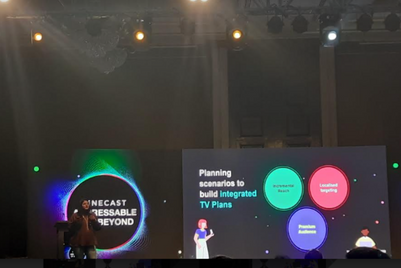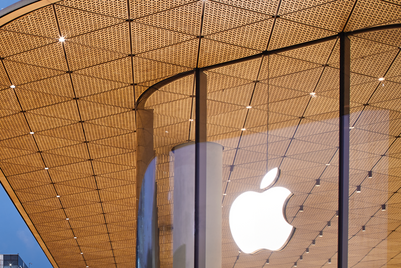
India's linear TV advertising market stands at INR 329 billion in 2023 and is projected to grow by 8% in 2024, accounting for 33.2% of the overall Indian ad market.
There's significant potential for this market share to shift towards CTV (Connected TV) following its adoption in India. For this transition, key players in the linear segment—such as Zee Network, Sun TV, Star India—need to adapt their content strategies to offer content for free (under the free advertising-supported streaming television, or FAST, model) in collaboration with telecom partners, thus driving scale in this segment.
India currently has 20 million CTV subscriptions as of the 2023 calendar year, which have grown at a CAGR of 58.7% over the last three years, with further growth estimated at 26% CAGR (2023-26). In contrast, in the US, CTV ad spends rose at a CAGR of 38.4% over CY19-23 to $18.5 billion and are expected to reach $24.4 billion by 2025, delivering a CAGR of 15% over 2023-25.
Furthermore, the share of CTV ad spends in total TV ad spends increased by 820bps from 20.9% in 2021 to 29% in 2023, with the share anticipated to rise further to 41.8% in 2027.
Adoption of CTV: A big advantage for the ecosystem
The adoption of CTV represents a potential win-win for the entire ecosystem—content creators, consumers, and advertisers; due to its real-time measurement capabilities and higher ROI for advertisers.
The share of CTV ad spends as a percentage of TV ad revenues is a mere 2.2% in India, compared to markets like the US or UK, where CTV ad spends are 29% and 21%, respectively. Offering premium sports properties like the Indian Premier League (IPL) for free has recently boosted CTV ad spends, as most other broadcast-led OTT platforms are behind a paywall or use a freemium model, and consumption on YouTube is largely driven by mobile. The adoption of FAST could also drive the emergence of online aggregators like Jio Cinema and YouTube for content consumption on CTV.
From a consumer standpoint, CTV adoption offers numerous benefits: High-quality content (4K), interactivity within content, and an enhanced overall viewing experience.
For advertisers, CTV can help target audiences more effectively and drive ROI; the advent of programmatic ad-led conversion models on CTV, similar to those on mobile, can help drive returns.
Lastly, the platform or content creator can access real-time data on content consumption within CTV, enabling strategic decision-making—a clear differentiator from linear TV, which relies on sampling methods to gauge audience and content consumption trends.
CTV can tap a sizeable share in India’s large digital Adex market
The digital-ad market in India stands at INR 397 billion, and CTV ad spends are only INR 7.2 billion, which is 1.5% of total digital adex. Although dominated by search and social, CTV ad spends in digital are expected to grow exponentially to 7-8% of total digital adex over the medium to long term—a growth of 40% year-on-year.
In the digital space, the overall video Adex is INR 130 billion, with aggregators like YouTube occupying a lion’s share in the mobile space, which accounts for approximately two-thirds of it. There is an opportunity for other players as well to grow in this segment by showcasing their unique content, which will ultimately improve CTV adex.
High-speed data bandwidth: A key for CTV success in India
The penetration of wired broadband in India, currently at just 12% compared to linear TV’s mammoth penetration of 70%, will be a critical factor in the success of CTV in India. Linear TV broadcasters will need to partner or become aggregators to provide a variety of content for free to capitalise on the growth in CTV. Moving towards FAST and CTV will enable linear TV players to gain significant exposure in the high-growth digital segment and somewhat offset the negative impact of low growth in the linear TV advertising segment.
Moreover, 5G penetration in India is expected to reach 860 million connections by CY29, a CAGR of 37% over CY23-29. This development is likely to be a huge driver for the adoption of CTVs in India, which will ultimately boost CTV ad revenues.
Currently, the ad pricing for TV is INR 1.2-1.4 million per 10-second slot for sports content (IPL) and INR 0.4-0.5mn per 10-second slot for non-fiction GEC content. TV pricing remains higher than CTV, despite the CPM/pr.
As the Indian market continues to evolve, the shift from linear TV to Connected TV represents a significant growth opportunity for advertisers, driven by technological advancements and changing consumer preferences. Embracing CTV can offer more precise targeting and richer viewer engagement, setting the stage for a new era in Indian advertising
Karan Taurani is a senior vice president at Elara Capital.



.jpg&h=334&w=500&q=100&v=20250320&c=1)
.jpg&h=334&w=500&q=100&v=20250320&c=1)


.jpg&h=334&w=500&q=100&v=20250320&c=1)

.jpg&h=334&w=500&q=100&v=20250320&c=1)


.jpg&h=334&w=500&q=100&v=20250320&c=1)

.jpg&h=268&w=401&q=100&v=20250320&c=1)
.jpg&h=268&w=401&q=100&v=20250320&c=1)





